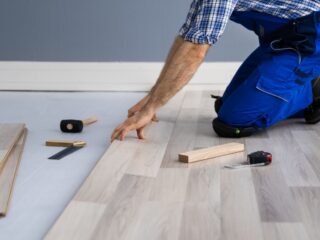
We’ve all seen it – a job done right where the surface looks amazing and is built to last for years. But how often do you see what it takes behind the scenes to make this happen? That’s why we are talking with experts in the field, according to contractors, about why proper concrete surface preparation is so important before laying down any foundation of work that will be subjected to wear and tear. This is no small task, but when performed correctly can mean seamless results plus providing extra protection against further damage or deterioration over time. Keep reading if you’re interested in learning more about the critical nature of this type of outdoor work!
What Is Concrete Surface Preparation And Why Is It Important
Concrete surface preparation is an essential step in any construction project. It involves a combination of techniques, such as grinding, shot blasting, and scarifying, to clean and smooth the surface before applying coatings, overlays, or toppings. For this, you will need the right equipment. To ensure a high-quality finish, contractors often rely on the Niagara Machine for advanced equipment that can effectively handle the demands of concrete surface preparation. This process removes any contaminants, such as grease, oil, dirt, or old coatings, and roughens the surface to allow for better adhesion. Without proper concrete surface preparation, coatings and toppings can peel, crack, or bubble, compromising the integrity of the floor and shortening its lifespan. Additionally, a poorly prepared surface can lead to safety hazards, such as slips, trips, and falls. In short, investing time and resources in concrete surface preparation is crucial for achieving a durable, safe, and aesthetically pleasing floor.
The Benefits Of Sealing Your Concrete Surface
Are you tired of dealing with cracked and stained concrete surfaces? Sealing your concrete can provide significant benefits and protect your investment. When concrete surfaces are sealed, they become more resistant to water, oil, and other liquids. This helps to prevent staining and makes cleaning up messes a breeze. Sealing also adds an extra layer of protection against freezing and thawing cycles, which can cause cracks in the surface over time. Additionally, sealed concrete surfaces are less susceptible to damage from UV rays and harsh weather conditions. By sealing your concrete, you can prolong its lifespan and save yourself time and money in the long run.

Techniques For Cleaning Surfaces Before Applying Sealant
Before applying sealant, it’s crucial to thoroughly clean the concrete surface. This can be accomplished using a variety of methods. Power washing is one of the most effective ways to remove dirt, grime, and old sealant from the concrete. Acid etching, another common technique, uses a mild acid solution to open the pores of the concrete and allow the sealant to penetrate more deeply. This method is excellent for removing heavy grime or rust stains. For oil-stained surfaces, a degreasing solution may be applied to lift and remove the oily residue. Lastly, mechanical methods such as sandblasting or grinding can be used to remove old coatings or to roughen the surface for better sealant adhesion. The choice of cleaning technique depends on the condition of the concrete and the desired finish.
Common Mistakes Made When Preparing A Concrete Surface
When it comes to preparing a concrete surface, there are several mistakes that are commonly made. One of the biggest is failing to properly clean the surface before beginning work. Any dirt, debris, or other materials left on the surface can negatively affect the adhesion of the concrete. Another common mistake is not allowing the surface enough time to dry after cleaning. Moisture trapped within the concrete can cause the material to crack or begin to deteriorate. Additionally, many people forget to fill in any existing cracks or holes before beginning the concrete work. This can lead to a less-than-perfect surface, with visible imperfections that could even cause damage in the future. It’s important to avoid these mistakes and take the time to properly prepare any concrete surface for optimal results.
Tips From Experienced Contractors
Experienced contractors consistently emphasize the importance of using the right tools and materials for concrete surface preparation. Utilizing industrial-grade equipment, such as diamond grinders and shot blasters, can help achieve a more thorough and even preparation, crucial for long-lasting results. They also recommend using high-quality sealants and coatings that can withstand varying weather conditions and heavy traffic. Furthermore, optimal results can be achieved by appropriately adjusting the application techniques based on the type of surface and the specific requirements of the project. Ensuring safety measures, including wearing suitable protective equipment and adhering to best practices, is also integral to achieving the best outcomes. In conclusion, meticulous planning, careful execution, and the use of high-quality tools and materials are key components of successful concrete surface preparation.

In the world of construction, the importance of concrete surface preparation cannot be overstated. Whether you’re laying a new foundation or applying coatings or overlays, the success of your project hinges on this critical step. From employing the right techniques to clean and smooth the surface, to sealing it for enhanced durability and long-lasting protection, every aspect of the preparation process plays a vital role in determining the outcome. By avoiding common mistakes and adhering to the tips shared by seasoned contractors, you can ensure a high-quality, safe, and aesthetically pleasing concrete surface that stands the test of time. Undoubtedly, investing in proper concrete surface preparation is not just a best practice—it’s a necessity for any successful construction project.












